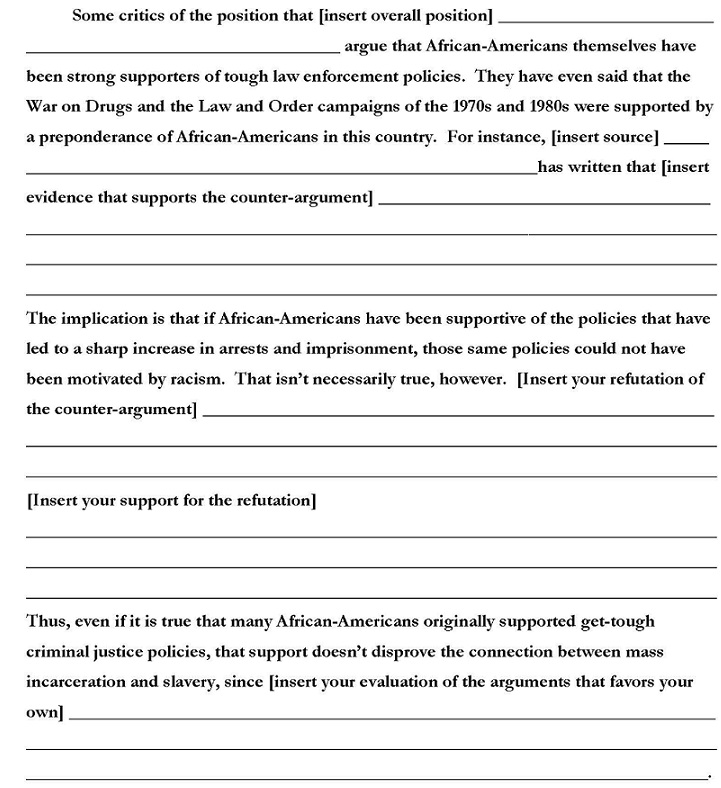
The Refutation Gaps Activity
Overview
Templates can help students master the format, linguistic constructs, and conceptual structure of the more difficult aspects of argument writing. Refutation of counter-arguments certainly falls into the “difficult aspects” category. Through practice with the scaffolding device of the writing template, students can assimilate the formal aspects of written refutation so that they can cultivate the even more higher-order quality of thinking hard about why it is that the best counter-arguments against their position aren’t reasons to abandon their original position, even if they necessitate some concession and adjustment.
Method and Procedure
Students should be paired. They should then work on completing each of the four refutation templates, filling in the gaps with the most appropriate language they can produce. When they’ve completed their templates, they should exchange their templates with their partner. They should talk through their differences in their respective refutation paragraphs, with each partner asking the other why they made their choices, asking them to justify those choices, and comparing them to their own.
The activity can end with sharing out of the most interesting and productive differences the partners’ found in their refutation paragraphs, in addition to the specific points at which they most strongly agreed. The teacher should collect the refutation templates for formative assessment.
Refutation Paragraphs with Gaps
There are two types of counter-arguments in these refutation paragraphs: one that is “independent” of the arguments being made by the writer but that opposes the position, and one that is “specific” to an argument in the essay. Both are valid types of counter-arguments to include in an essay to refute. Choosing between them depends in part on which is the stronger counter-argument – “level of difficulty” is a criterion for effective and convincing refutation, and writers always want to try to address the strongest counter-argument that they can refute. It also depends in part on how many counter-arguments the writer wants to include; responding to more counter-arguments usually means addressing more “specific” counter-arguments.
The activity included here is built on the mass incarceration issue recently featured in The Debatifier.
Here is an example of a refutation paragraph with gaps, included in the full activity below, with an “independent counter-argument,” one that addresses the overall position of the writer but not one of her reasons for her position (developed with evidence into a full argument).

You can click on the full activity below.

If you use this activity, let us know how it goes for you. And let us know if we can help you and your school design and adapt similar methods of teaching refutation, specific to your curriculum, and support their implementation — info@argumentcenterededucation.com.

